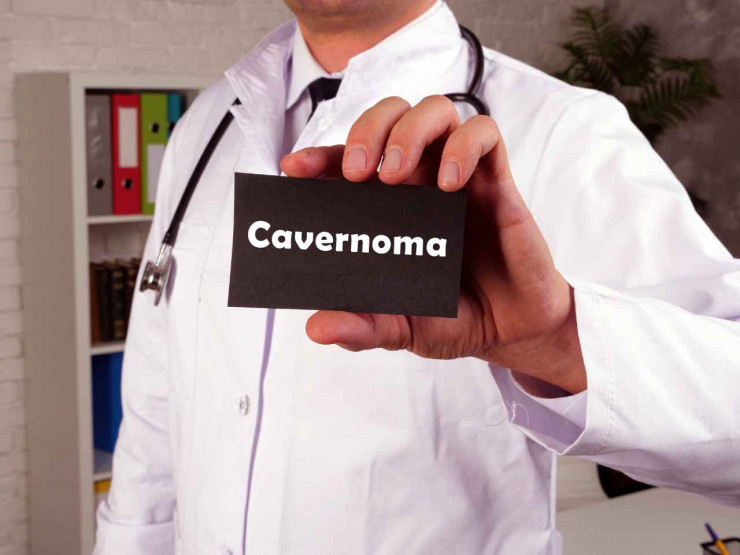Cavernoma Blog August 2023
Cavernoma, also known as cavernous angioma or cavernous haemangioma, is a type of vascular malformation that affects the blood vessels in the brain or spinal cord. These abnormal clusters of blood vessels can occur anywhere in the body, but they are most commonly found in the brain.
Cavernomas are usually small and asymptomatic, meaning that they do not cause any problems. However, in some cases, they can cause significant neurological symptoms such as seizures, headaches, and neurological deficits. The symptoms often worsen over time and can lead to disability or even death if left untreated.
Cavernomas, or cavernous haemangiomas, can cause a range of symptoms depending on their size and location in the brain or spinal cord. Some people with cavernomas may have no symptoms at all, while others may experience significant neurological problems. Some common symptoms of cavernomas include but are not limited to:
· Seizures: Cavernomas can cause seizures, which can range from mild to severe. Seizures may be the first symptom of a cavernoma and can occur without warning.
· Headaches: Cavernomas can cause headaches, which may be severe and frequent. Headaches may be located in the area near the cavernoma or may be more widespread.
· Weakness: Cavernomas can cause weakness on one side of the body or in one limb. This weakness may be sudden or may develop slowly over time.
· Difficulty speaking or understanding speech: Cavernomas can affect areas of the brain responsible for language, leading to difficulty speaking or understanding speech.
· Vision problems: Cavernomas located in the visual pathways can cause visual disturbances such as blurred vision or loss of vision.
· Difficulty with balance and coordination: Cavernomas can affect areas of the brain responsible for balance and coordination, leading to difficulty walking or performing daily activities.
· Numbness or tingling: Cavernomas can cause numbness or tingling in one part of the body.
It is important to note that not all cavernomas cause symptoms, and some people may not realize they have a cavernoma until it is detected during imaging for another medical condition. If you experience any of these symptoms, it is important to seek medical attention to determine the underlying cause and appropriate treatment.
Cavernomas are usually diagnosed through imaging tests such as magnetic resonance imaging (MRI) or computed tomography (CT) scans. These tests can help determine the location, size, and number of cavernomas present.
The exact cause of cavernomas is not fully understood, but it is believed to be related to genetic mutations that affect the development of blood vessels. In some cases, cavernomas can be inherited from a parent, while in other cases they may occur spontaneously.
Treatment options for cavernomas depend on the location and size of the lesion, as well as the severity of the symptoms. In some cases, cavernomas may not require any treatment at all. However, in cases where the cavernoma is causing significant symptoms, treatment options may include surgery, radiation therapy, or embolization.
Surgery involves removing the cavernoma, while radiation therapy and embolization involve using high-energy radiation or injected materials to shrink the lesion. The choice of treatment will depend on the individual case and the risks and benefits associated with each option.
Recovery after cavernoma surgery can vary, as well as the extent of the surgery. In general, recovery can take several weeks to months, and it is important to follow your healthcare provider's instructions carefully to ensure a successful recovery. Here are some common aspects of recovery after cavernoma surgery:
· Hospital stay: You will typically need to stay in the hospital for a few days after the surgery to monitor for any complications or signs of infection.
· Pain management: You may experience pain and discomfort after surgery, and your healthcare provider may prescribe pain medication to manage it.
· Physical therapy: You may be referred to a physical therapist to help regain strength, balance, and coordination after surgery.
· Rest and recovery: You will need to take some time off from work or other activities to allow your body to heal. Your healthcare provider may provide guidance on how much rest you need.
· Follow-up appointments: You will need to attend follow-up appointments with your healthcare provider to monitor your recovery and ensure that there are no complications.
· Gradual return to normal activities: You will need to gradually resume normal activities, such as exercise and work, as your healthcare provider deems appropriate.
It is important to note that recovery after cavernoma surgery can be different for everyone, and it is important to listen to your body and follow your healthcare provider's guidance for a successful recovery. If you experience any concerning symptoms or have questions about your recovery, be sure to discuss them with your healthcare provider.
In conclusion, cavernomas are a type of vascular malformation that can affect the blood vessels in the brain or spinal cord. While they may not cause any symptoms in some cases, they can lead to significant neurological problems in others. Treatment options depend on the location and severity of the cavernoma, and may include surgery, radiation therapy, or embolization. If you suspect that you or a loved one may have a cavernoma, it is important to seek medical attention as soon as possible to determine the best course of treatment.
Data sourced form*



